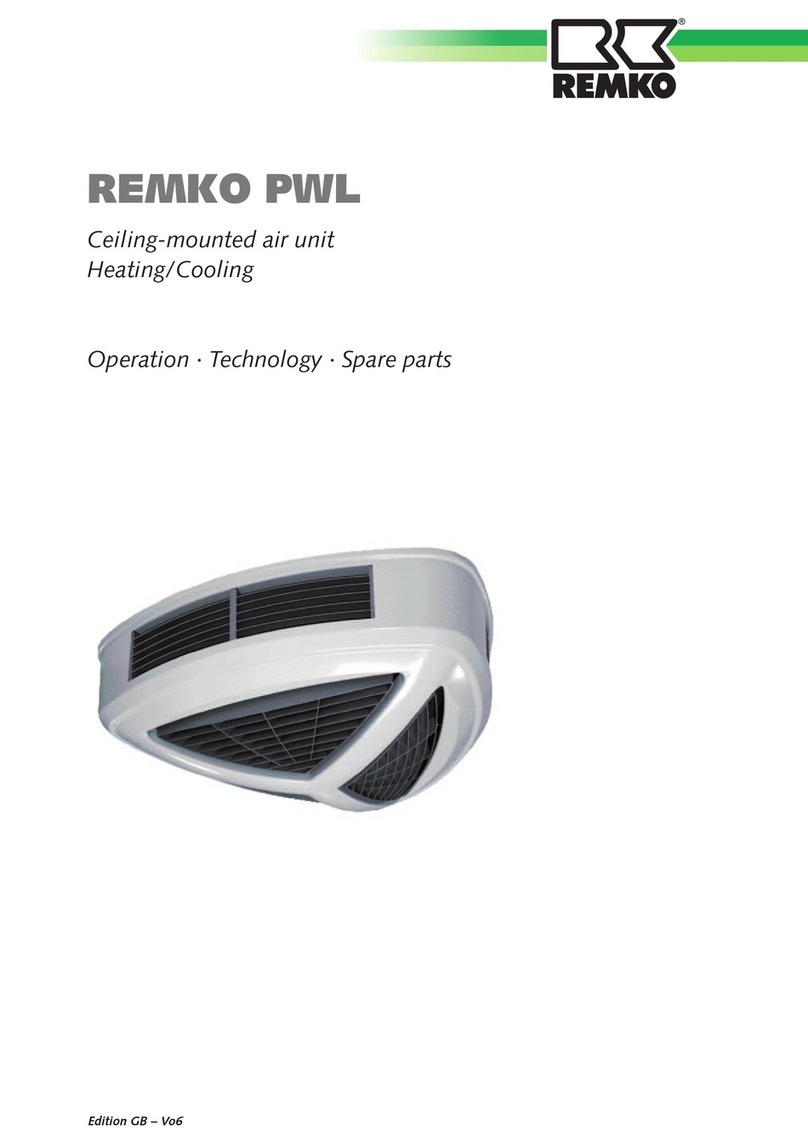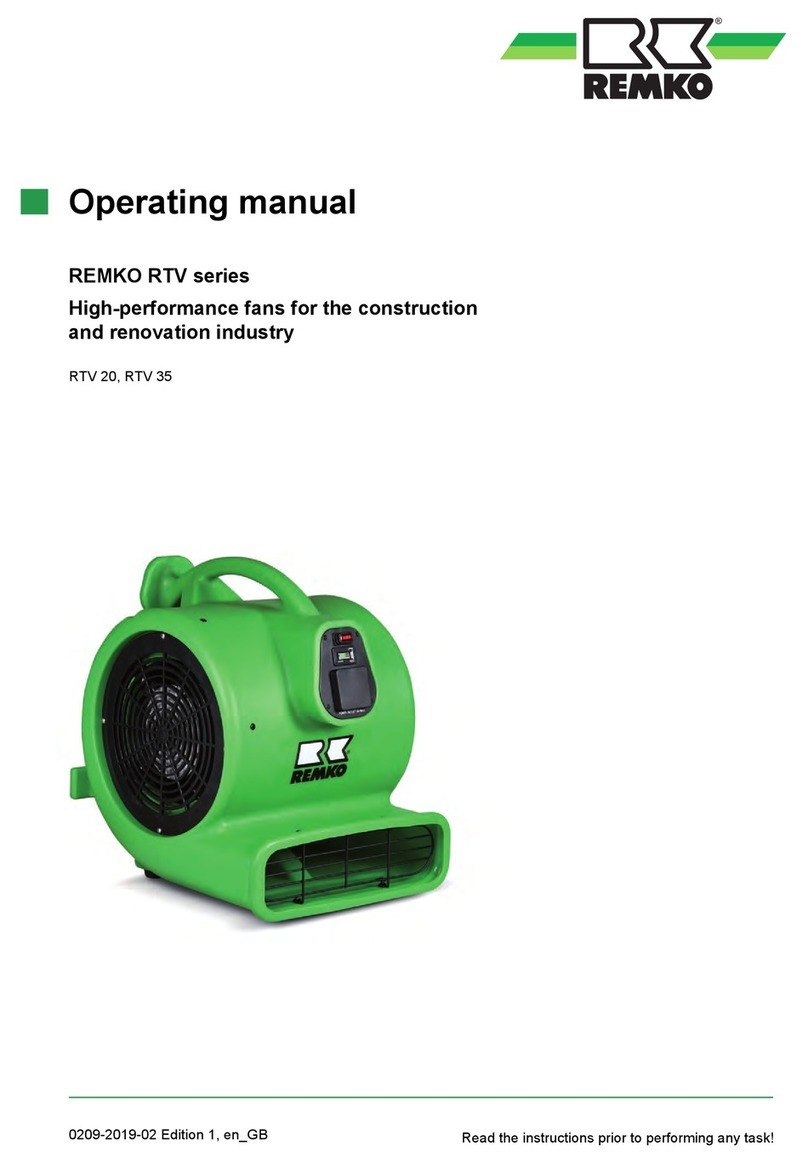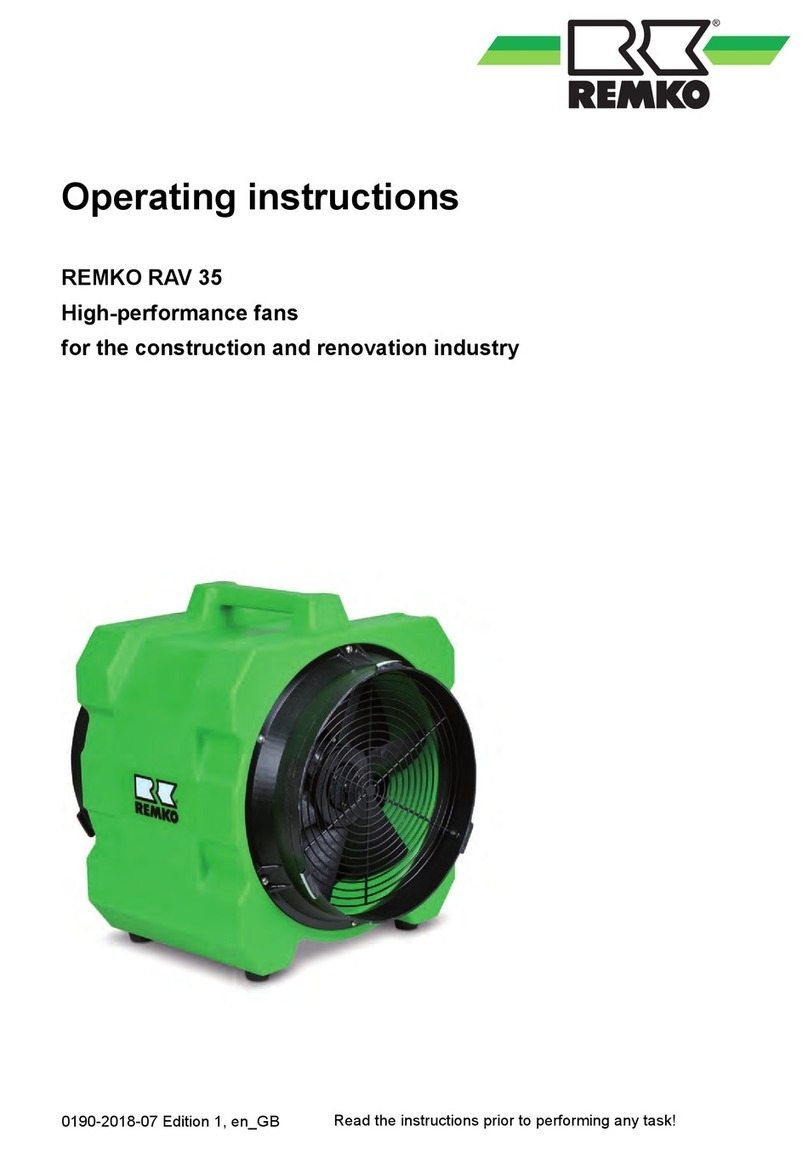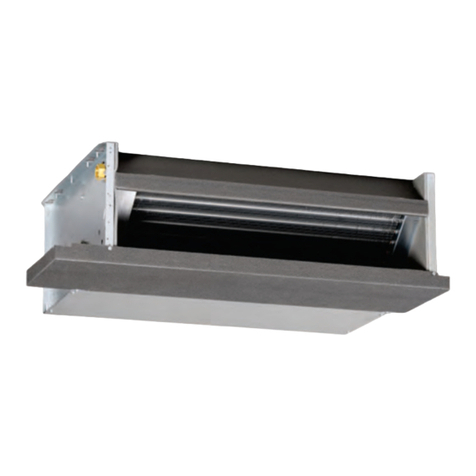
4
REMKO PWL
Safety notes
The units were subjected to
extensive material, functional and
quality inspections prior to delivery.
However, dangers can emanate
from the units if they are used
improperly or not as intended by
untrained personnel.
Always observe the following
safety instructions:
■The respective building code
regulations must be observed as
a basic rule
■The operator is responsible for
the proper unit installation, the
correct electrical installation and
the safe operation of the units
■The units must be set up,
installed and operated in such a
way that no one is endangered
or stressed by radiated heat
■The units may only be fastened
to structures or ceilings made
of construction materials of
sufficient load bearing capacity
■The fastening must take place
with bearing anchors, which are
to be fastened to the unit
■Assembly, connection of the
heating medium, connection
of the electrical system and
the maintenance may only be
carried out by trained, qualified
persons
■The units may not be installed
or operated in potentially
flammable or explosive
environments, or in extremely
dusty / aggressive air
Planning notes
In order to achieve an optimum
comfortable temperature in a
room, the planning of the room
heating or room cooling must
follow some fundamental rules.
Heating mode
The following data is required to
plan the room heating:
■Room heating requirements
QH(kW)
■Basic measurements of the room
(length, width, height)
■Desired air exchange
■Required room temperature
■Required heating medium
temperatures for supply and
return flow
The air outlet temperature of the
units should not fall below 34° C
or exceed 42° C.
If the outlet temperature is below
34 ℃, there is the risk of unpleasant
cool drafts in the work area.
If the outlet temperature is
higher than 42° C, an increased
temperature in the ceiling area
occurs.
The casting distance of the
warm air flow is reduced and
the air in the work area cannot
be sufficiently penetrated by the
warm air flow and mixed.
Undesired "cold air zones" form in
the work area and excessive warm
air pockets form in the ceiling area.
The result is unnecessary heat
losses.
Cooling mode
The following data is required to
plan the room cooling:
■Room cooling load
QH(kW)
■Basic measurements of the room
(length, width, height)
■Required room temperature and
possibly relative humidity
■Required cooling medium
temperatures for supply and
return flow
In order to prevent unpleasant
draughts in the work area, the
air outlet temperature in cooling
mode should be no more than
6 - 8 K below the ambient
temperature.
If the temperature difference is
excessive (> 8 K), unpleasant “cold
air zones“ may form.
The circulated total air quantity of
the units per hour should be 4 to 5
times the room volume so that the
system can react dynamically and
effectively.
If the air circulation is undercut,
the desired room climate control is
very slow-acting and delayed.
In order to prevent the units
dripping, the fan should be set
to the lowest speed and the air
discharge direction should be
selected to be parallel to the
ceiling (horizontal). The medium
temperature may also have to be
adjusted accordingly in order to
reduce condensate dripping.

































